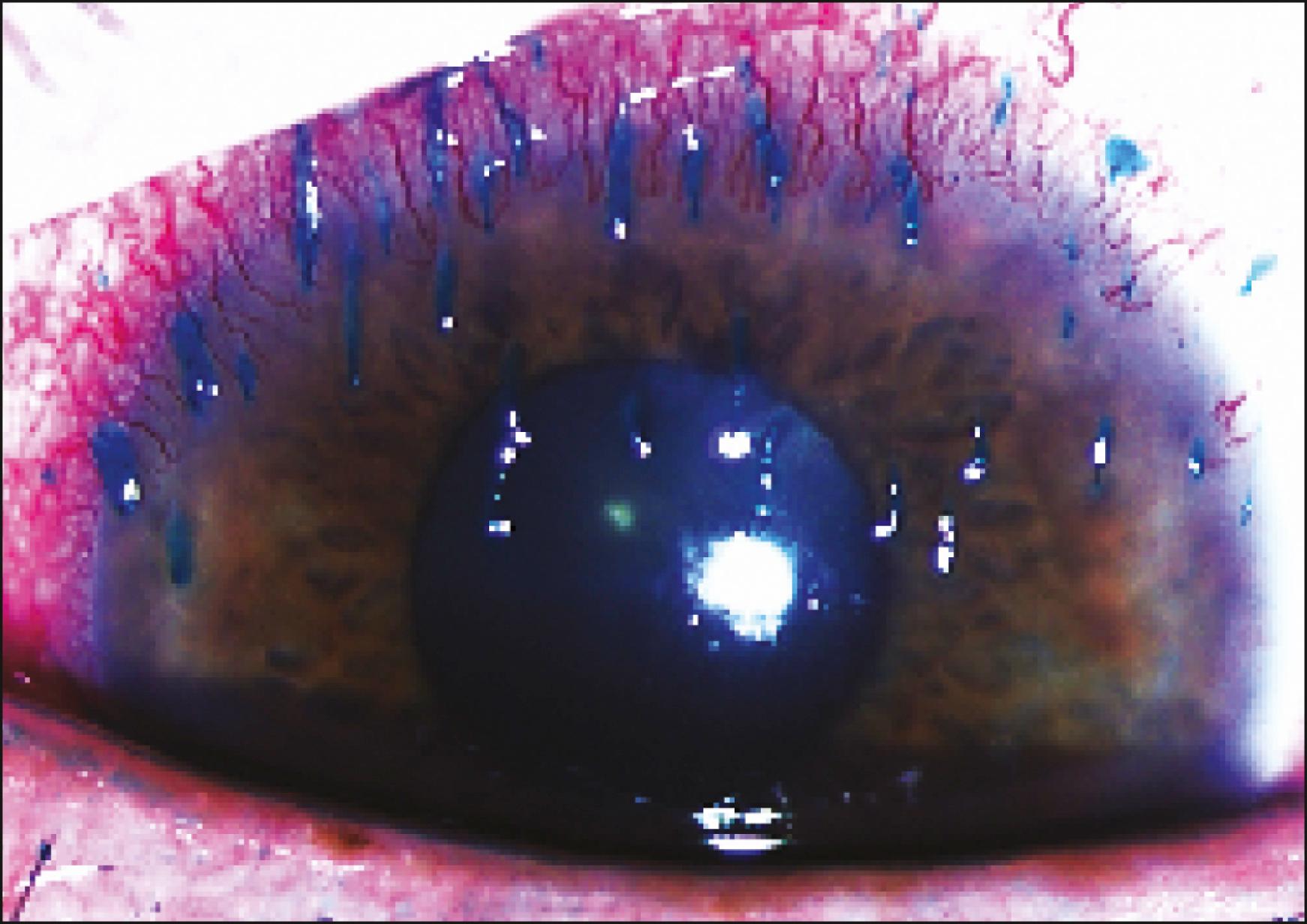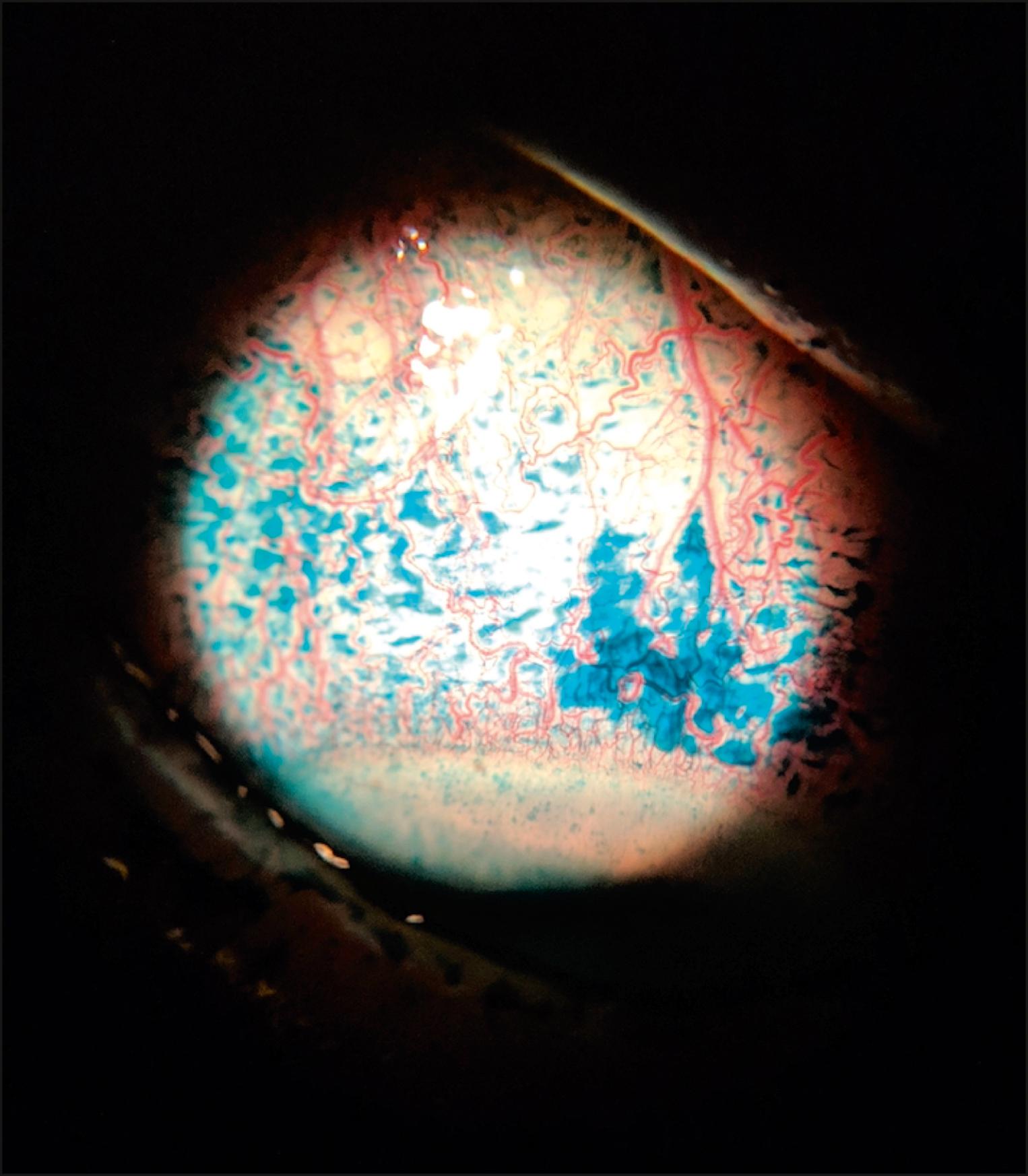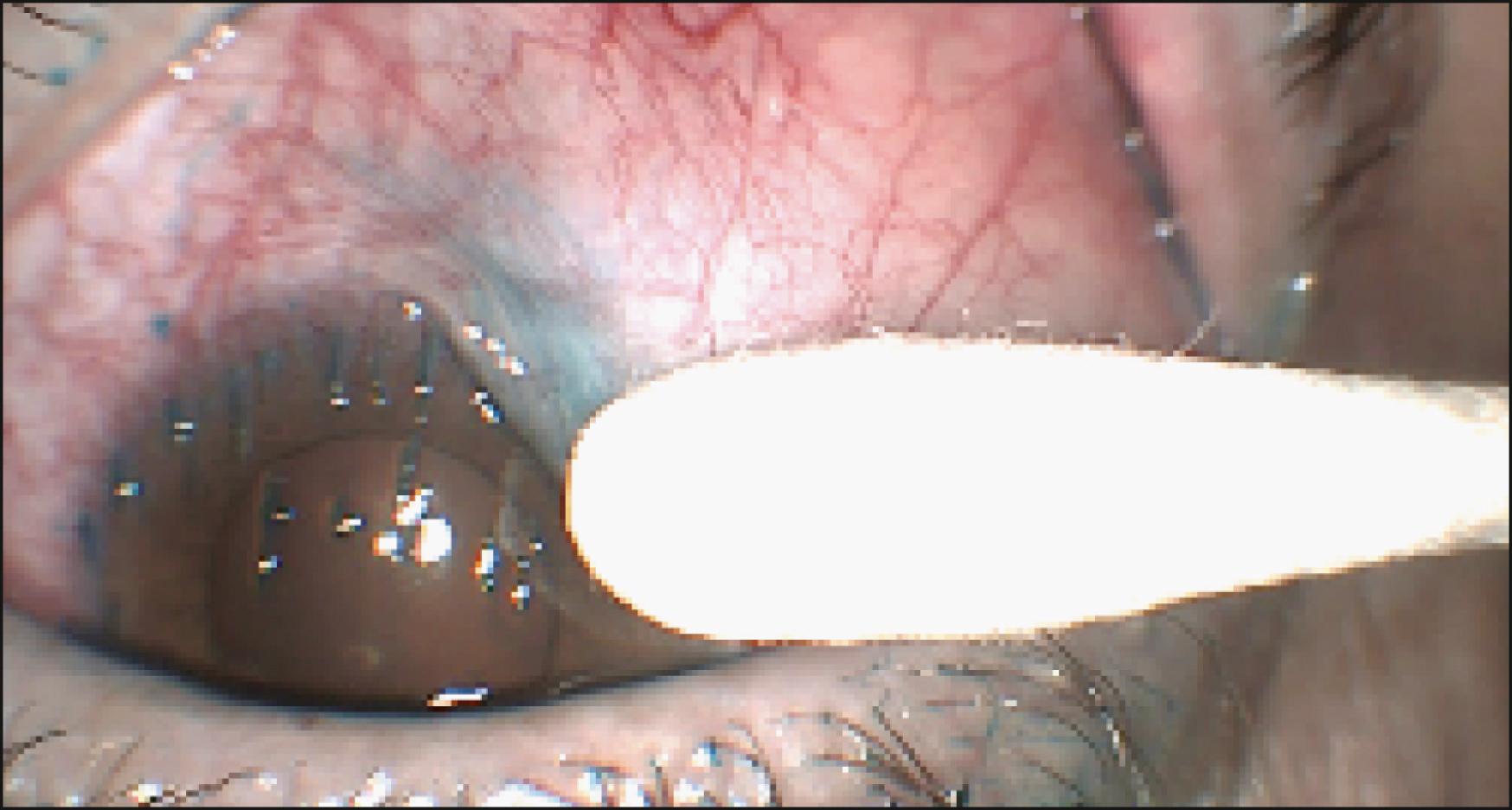Physical Address
304 North Cardinal St.
Dorchester Center, MA 02124
Superior limbic keratoconjunctivitis is an ocular surface disease.
Discrepancy between signs and symptoms is not uncommon, and the discomfort can be disabling.
Etiology is unclear, but mounting evidence suggests a mechanistic theory.
Distinct histopathologic findings include epithelial keratinization, acanthosis, dyskeratosis, balloon degeneration of the epithelial nuclei, reduction in goblet cell density, and inflammatory reaction in both the bulbar and upper tarsal conjunctiva.
There is an association but no distinct causative association with thyroid disease, but this should always be investigated.
Medical and surgical modalities of treatment are variably successful.
Medical treatment modalities include lubricants, topical steroids, nonsteroidal antiinflammatory agents, autologous serum drops, localized chemical cautery, pressure patching and contact lens wear, N-acetyl cysteine, vitamin A, mast cell stabilizers, tacrolimus and cyclosporine A, and more.
Surgical treatment modalities include conjunctival resection and thermal cautery.
Superior limbic keratoconjunctivitis (SLK) is a disease of the ocular surface characterized by bilateral chronic inflammation of the superior tarsal and bulbar conjunctiva, defects of the upper conjunctival epithelium, corneal superficial punctate keratitis, proliferation and keratinization of the epithelial limbal cells, and occasionally, corneal filaments. In 1953, Braley and Alexander described findings of upper corneal superficial punctate keratitis and concomitant corneal filaments and several years later, Thygeson and colleagues , reported patients with superior corneal filaments and an inflamed superior conjunctiva. It was Theodore, , however, in 1963 and again in 1967, who provided a complete clinical description of the disease and suggested its current name. Several years later, Wright further specified the presence of papillary hypertrophy at the superior tarsal conjunctiva.
SLK is of unknown etiology and has a male:female ratio of approximately 3:1. It may occur at any age but is more common in the 30–55-year group. Although SLK is not associated with any known genetic predisposition or familial transfer pattern, Darrell reported two cases of SLK in identical twins.
Table 48.1 summarizes the common and occasional clinical findings in SLK. Affected patients usually complain of a foreign body sensation, pain, photophobia, mucoid discharge, epiphora, and sometimes, blepharospasm. , The discomfort is greatly aggravated in the presence of corneal filaments ( Fig. 48.1 ). SLK is usually bilateral but can be strikingly asymmetric, sparing the lower cornea, lower bulbar conjunctiva, and tarsal conjunctiva. Ocular examination reveals a thickened and taut upper eyelid and papillary hypertrophy of the tarsal conjunctiva on lid eversion. The upper bulbar conjunctiva is usually irritated and inflamed with sectorial injection ( Fig. 48.2 ). It appears redundant, corrugated, may override the upper limbal area, and is easily movable with a cotton-tipped applicator ( Fig. 48.3 ). Corneal filaments, when present, may cause significant and diffuse conjunctival irritation owing to frictional drag during blink action.
| Eyelid | Thick, Taut, Blepharoptotic |
|---|---|
| Conjunctiva | Palpebral: papillary hypertrophy. Bulbar: redundant, corrugated, movable with an applicator, epithelial defects stained with vital dyes. Occasional dot hemorrhages. Thickening and cornification may be present. Wedge-shaped injection usually present. Mucoid discharge is not uncommon. Lower bulbar and palpebral conjunctivae are spared. |
| Cornea | Upper epithelial superficial punctate keratitis, upper filaments. Occasional micropannus; rarely, thickened and edematous stroma. Lower cornea is spared. Occasional hypesthesia. |
| Tears | Low Schirmer test result in approximately one-fourth of patients. |



Both the upper cornea and upper bulbar conjunctiva often exhibit epithelial defects and superficial punctate keratitis. The typical upper bulbar conjunctival epithelial defects are difficult to differentiate by fluorescein dye, which may lead to under or misdiagnosis. Vital dyes such as lissamine green or rose Bengal are more appropriate and should be utilized in the clinical work-up of ocular discomfort.
Although ultimately self-limiting, the disease may last for years in a relapsing-remitting pattern. Visual prognosis is usually excellent.
Become a Clinical Tree membership for Full access and enjoy Unlimited articles
If you are a member. Log in here